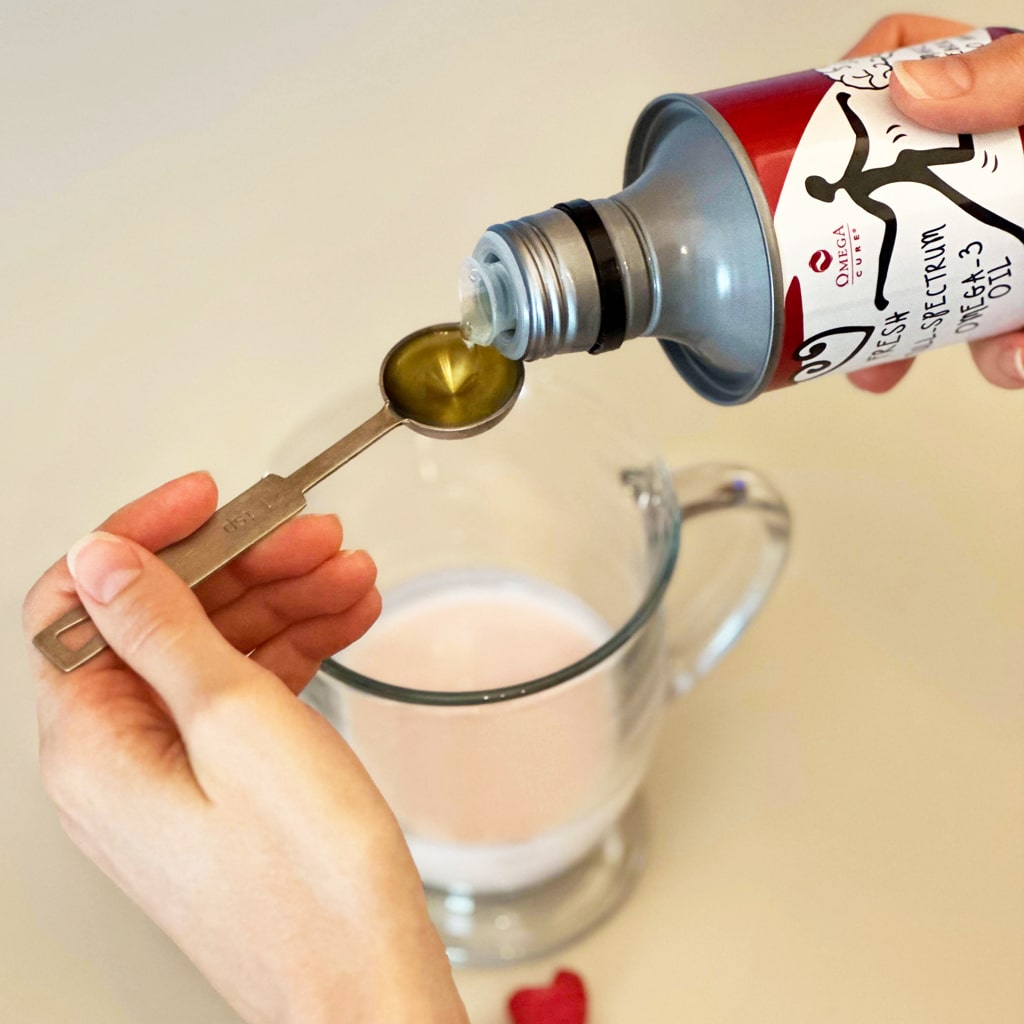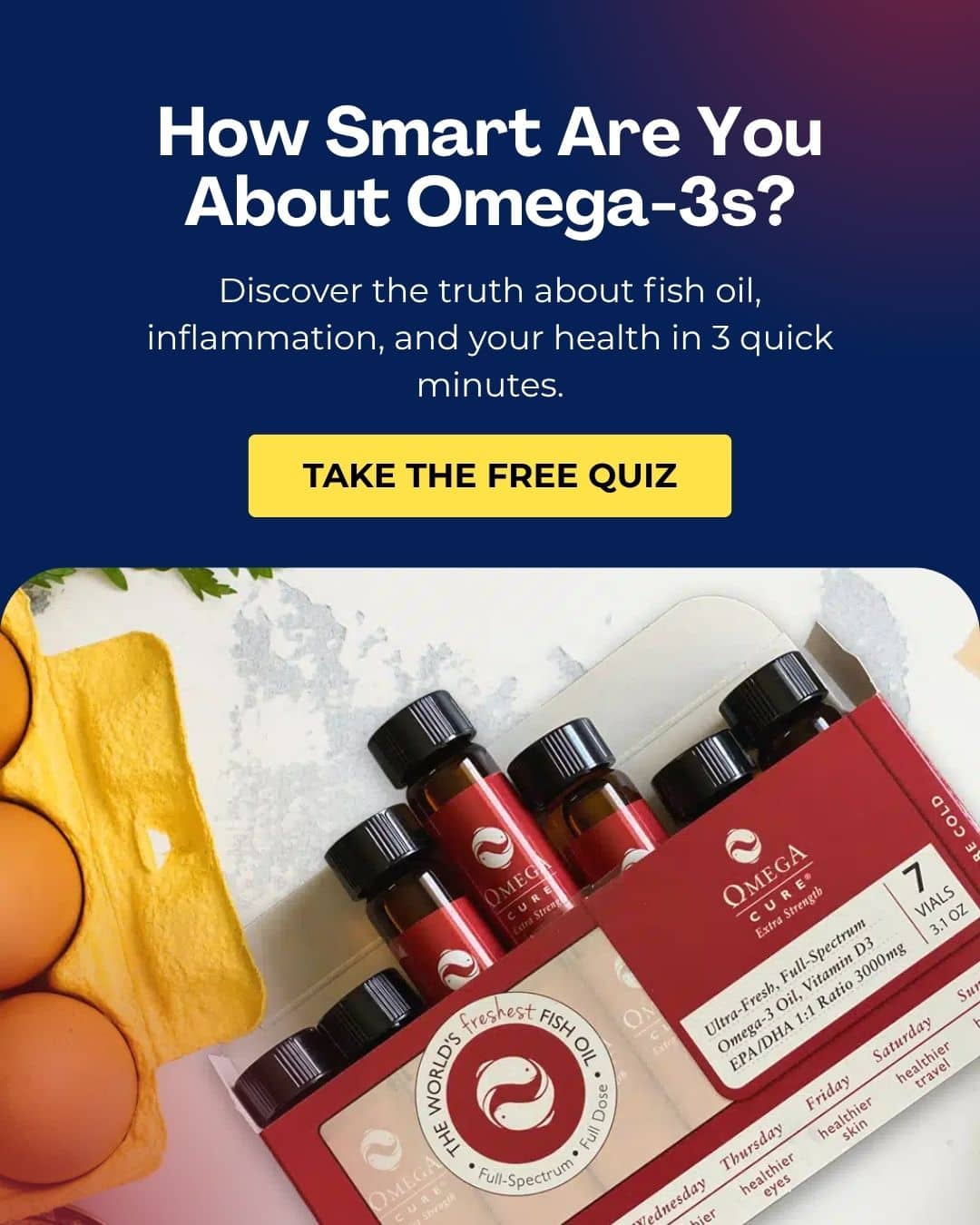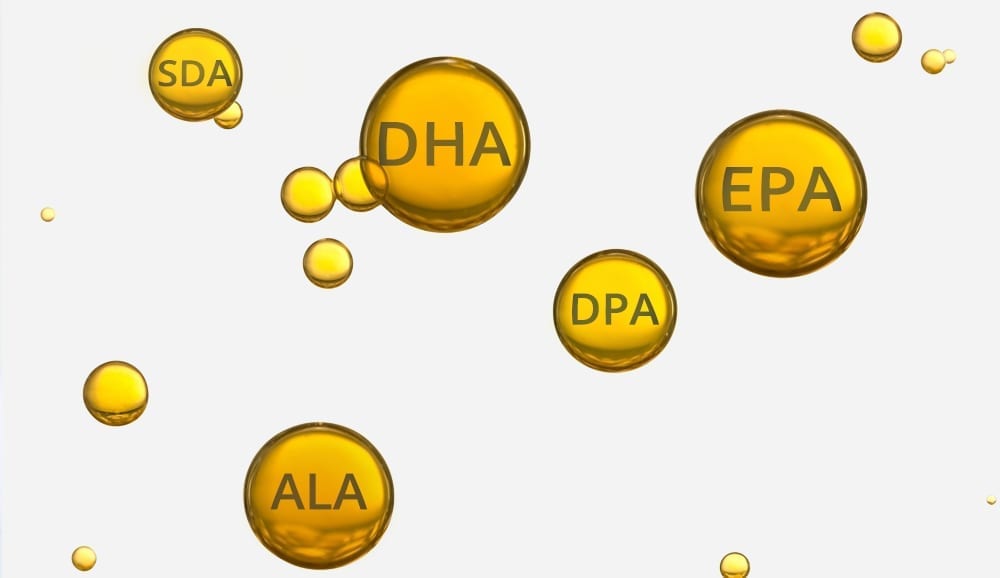What the History of Cod Liver Oil Teaches Us About Omega-3 Potency
In 1937, surgeon M. B. Daver noticed something odd while using cod liver oil to treat burns and pus-filled sores.
“Crude” cod liver oil helped his patients heal quickly. But refined cod liver oil did not have the same wound healing benefits. Did the refining process destroy the properties that made cod liver oil effective, Daver wondered in a British Medical Journal memorandum.
Eighty years later, Daver’s question is increasingly relevant. Omega-3s have evolved into a $4 billion industry, including everything from natural liquid fish oils to refined prescription pills. These products differ wildly in their nutrient profiles, dosages and even chemical makeups. Yet, they all usually get lumped together in reviews of omega-3 supplements.
Such generalizations make it confusing to read nutrition news. One week, headlines declare that fish oils have no heart health benefits and may even increase the risk of atrial fibrillation. The next week, studies show omega-3s fight cancer tumors.
How can we make sense of the conflicting findings? To get a better understanding, let’s take a closer look at fish oil’s long history and how today’s refining trends affect fish oil benefits.
Fish Oil’s Ancient Origins
Fish liver oil has a long history of medicinal use. In ancient Greece, Hippocrates (the so-called “Father of Medicine”) described using dolphin liver oil to treat skin issues. The Vikings prized fish liver oil as “the gold of the ocean,” thanks to its healing properties.
Cod liver oil remained a popular folk remedy in Northern Europe for centuries. And as early as 1782, English physicians began studying cod liver oil and prescribing it for rheumatism.
During the 19th century, cod liver oil became a widely accepted treatment for rickets, tuberculosis, joint and muscle pain, and skin wounds.

An old remedy: People have turned to fish oils for medical reasons for thousands of years. Early proponents included Hippocrates (the “Father of Medicine”).
What Made Cod Liver Oil So Effective?
Though cod liver oil was popular, 19th century scientists didn’t understand why it worked. Did cod liver oil contain some special, unknown ingredients? Or, were components working together to deliver synergistic benefits?
Vitamins…or something else?
In the 1910s, biochemists thought they found the answer when they discovered two essential nutrients in cod liver oil: vitamins A and D. Soon, scientists began extracting these vitamins from cod liver oil, believing them to be the sole reason for the oil’s potent effects.
In the 1940s, however, scientists began to wonder if cod liver oil offered something else besides vitamins. After all, in rat studies, other oils containing even more vitamin A and D didn’t prove as effective as cod liver oil.
In the early 1970s, researchers Bang and Dyerberg seemed to uncover the missing puzzle piece. They determined that fish and fish oil contained two omega-3 fatty acids called eicosapentaenoic acid (EPA) and docosahexaenoic acid (DHA).
EPA and DHA steal the show…for now.
Since their discovery, EPA and DHA have become some of the best studied nutrients in history, with over 30,000 scientific papers to their names.
EPA and DHA have been researched for everything from heart disease to rheumatoid arthritis. Scientists have also learned that these fatty acids reduce inflammation, support healthy nutrient exchange, and influence gene expression.
While EPA and DHA are vitally important, they represent just two members of a much larger fatty acid family found in fish and fish oil. Most of these other fatty acids haven’t been extensively researched yet. However, initial studies indicate they have potent benefits, too.
These findings suggest that EPA and DHA may just be part of fish oil’s evolving nutrition story, much like vitamin A and D were one century ago.
A big fatty-acid family: EPA and DHA represent only two kinds of omega-3 fatty acids. Scientists have identified over 30 other polyunsaturated omega-3s to date.
Natural Fish Oil Is More Than Just EPA & DHA
Today, fish oil is practically synonymous with the word ‘omega-3s.’
While it’s true that fish oils are potent sources of omega-3 fatty acids, natural fish oil contains far more than EPA and DHA.
Beneficial fats
Natural cod liver oil, for example, contains a good amount of lesser-known omega-3 fatty acids, like DPA omega 3. While DPA hasn’t been researched as much as EPA and DHA, research shows that it has potent anti-inflammatory effects and cardiovascular benefits.
Cod liver oil also delivers a range of other healthy fats besides omega-3s. In a teaspoon of cod liver oil, you’ll find saturated and monounsaturated fats similar to the ones in extra virgin olive oil and avocados.
Vitamins & valuable co-factors
Depending on how cod liver oil is made, it may contain vitamin A, D, and E – as well as co-factors like melatonin. (In most products, however, these vitamin levels are significantly reduced after the oils are purified of pollutants).
In non-winterized oils, like Omega Cure®, you also get additional wax esters and very long-chain fatty alcohols. These nutrients are also being researched for their unique health properties.
Are Omega-3 Concentrates Better?
Though natural fish oils contain many nutrients, the omega-3 industry is increasingly focused on isolating just EPA and DHA.
For pharmaceutical companies, it’s lucrative to obtain new patents by concentrating specific omega-3s into prescription medications.
Concentrating omega-3s also has a dose advantage. In the United States, omega-3 supplements usually come as fish oil or cod liver oil pills. Therefore, the more concentrated the oil is, the fewer pills consumers theoretically have to swallow to get an effective omega-3 dose.
New ratios and chemical forms
Sadly, highly concentrated omega-3 products retain only a fraction of the nutrients found in natural fish oils. Some concentrates contain exclusively EPA; others contain only DHA. Of the products that provide both EPA and DHA, the fatty acid ratios can differ tremendously.
How these products are concentrated – and their resulting chemical forms – also vary. Today, there are ethyl ester omega-3s, omega-3-carboxylic acids, and more. These chemically modified versions of EPA and DHA do not exist in nature.

The Reason Why Omega-3 Research Is So Confusing
As omega-3 research has progressed, the efficacy and safety of omega-3 supplements occasionally come into question. Some studies indicate significant benefits, while others find no improvements – or even adverse effects.
You can’t generalize about different omega-3 formulas
Scientists have many theories to explain the conflicting results. But, one fundamental problem is that omega-3 studies use products with disparate nutrient profiles, chemical forms, dosages, and freshness levels.
Given all these variations, it’s not surprising that “fish oil supplements” as a group fail to perform consistently.
Cell and mice studies have revealed that formulations made with differing ratios of EPA and DHA affect inflammation differently. Studies also show that an omega-3 oil’s chemical form influences how well it is absorbed. And as we’ve discussed in other articles, dose and freshness impact results, too.
Are we throwing out important nutrients?
EPA and DHA concentrates present another issue as well. As omega-3 research evolves, it continues to uncover new nutrients in fish oils – like DPA, SPMs, omega-7, and wax esters.
These findings invite familiar questions. Are EPA and DHA alone what make fish oil beneficial? Or do we suffer from the same tunnel-vision as the vitamin A and D-obsessed scientists at the start of the 20th century?
In Clinical Medicine, Isolating Nutrients Doesn’t Make Sense
There is no doubt that studying isolated fatty acids has its merits. Besides making research easier, it gives us better insight into how these nutrients work in the body.
But concentrating complex foods like fish oil into just one or two substances can get us into trouble. It’s the same kind of thinking that makes us believe taking a multivitamin is just as healthy as eating fruits and vegetables.
In reality, the human body doesn’t just rely on one or two nutrients to function. Usually, several different molecules interact with each other to create beneficial effects. That is why counting on just one drug or synthetic fatty acid to fix a problem isn’t logical.
Other industries seem to have understood this. With extra virgin olive oil, we know that excessive processing negatively impacts health benefits. Similarly, hemp manufacturers regularly discuss the ‘entourage effect’, which explains why the multitude of nutrients in full-spectrum hemp oil perform better than extracts. Interestingly, these oils are also usually taken in liquid form, not as capsules.
Why hasn’t the omega-3 industry caught up?

Extra virgin cod liver oil: Omega Cure is to fish what extra virgin olive oil is to olives.
Why Omega3 Innovations Fish Oil Is Different
When we introduced Omega Cure 15 years ago, we were bowled over by our customers’ feedback. People switching from prescription omega-3 pills reported reduced chronic pain, better gums, and improved cholesterol levels when they chose our Omega Cure.
We’ve spent years of research to determine why Omega Cure yields better effects than concentrated omega-3 oils. We’ve come to understand that Omega Cure’s difference is not only a matter of freshness – but that the oil mirrors the good fats you get when eating seafood.
Humans Need Fresh, Full-Spectrum Omega-3 Oils
Fish oil’s long history has good lessons for today.
While omega-3s are extremely well studied, there’s still a lot to learn about how processing impacts benefits and the multitude of nutrients found in fish oil.
What we do know is that Daver was asking the right questions back in 1937. In time, we believe research will prove full-spectrum fish oil far exceeds the benefits of heavily refined omega-3 concentrates and capsules.
Try Exceptionally Fresh Omega Cure
Experience the Omega3 Innovations difference for yourself with the most effective fish oil supplement on the market.
Buy Now
References:
1. Daver, M. B. (1937). Crude Cod-Liver Oil in Treatment of Wounds. British Medical Journal, 1, 169.
2. Guy, R. A. (1923). The History of Cod Liver Oil as a Remedy. American Journal of Diseases of Children, 26(2), 112-116.
3. Hernigou, P., Auregan, J.C. & Dubory, A. (2019). Vitamin D: Part II; Cod Liver Oil, Ultraviolet Radiation, and Eradication of Rickets. International Orthopaedics (SICOT), 43, 735–749.
4. Jongh, L. J. (1849). The Three Kinds of Cod-Liver Oil Comparatively Considered, with Reference to Their Chemical and Therapeutic Properties (E. Carey, Trans.). The British and Foreign Medico-Chirurgical Review, 4(8), 477–484.
5. Wendt, D. (2010). The Man with a Fish on His Back. Distillations. Science History Institute.
6. Daniells, Stephen. The Omega-3 Pioneer. NutraIngredients-USA.com. November 27, 2007.
7. Brandaleone, H., & Papper, E. (1941). The Effect of the Local and Oral Administration of Cod Liver Oil on the Rate of Wound Healing in Vitamin A-Deficient and Normal Rats. Annals of surgery, 114(4), 791–798.
8. Schots, P. C., Pedersen, A. M., Eilertsen, K., Olsen, R. L., Larsen, T. S. (2020). Possible Health Effects of a Wax Ester Rich Marine Oil. Frontiers in Pharmacology, 11, 961.
9. Mazzocchi, A. et al. (2021). Bioactive Compounds in Edible Oils and Their Role in Oxidative Stress and Inflammation. Frontiers in Physiology, 12: 659551.
10. Engström, K., Saldeen, A. S., Yang, B., Mehta, J. L., Saldeen, T. (2009). Effect of Fish Oils Containing Different Amounts of EPA, DHA, and Antioxidants on Plasma and Brain Fatty Acids and Brain Nitric Oxide Synthase Activity in Rats. Upsala Journal of Medical Sciences, 114(4), 206–213.
11. Zhang, Y. et al. (2018). DHA, EPA and Their Combination at Various Ratios Differently Modulated Aβ 25-35-Induced Neurotoxicity in SH-SY5Y Cells. Prostaglandins, Leukotrienes & Essential Fatty Acids, 136, 85-94.
12. Cholewski, M., Tomczykowa, M., & Tomczyk, M. (2018). A Comprehensive Review of Chemistry, Sources and Bioavailability of Omega-3 Fatty Acids. Nutrients, 10(11), 1662.
13. Dasilva, G., Boller, M., Medina, I., & Storch, J. (2018). Relative Levels of Dietary EPA and DHA Impact Gastric Oxidation and Essential Fatty Acid Uptake. The Journal of Nutritional Biochemistry, 55, 68–75.
14. Ferber, S. G. et al. (2020). The “Entourage Effect”: Terpenes Coupled with Cannabinoids for the Treatment of Mood Disorders and Anxiety Disorders. Current Neuropharmacology, 18(2): 87–96.
Popular posts



Related posts








